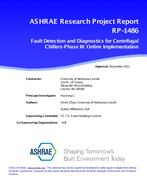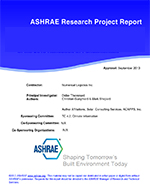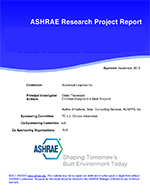-
-
Available Formats
- Options
- Availability
- Priced From ( in USD )
-
Available Formats
-
- Immediate download
- $32.00
- Add to Cart
Customers Who Bought This Also Bought
-

RP-1453 -- Updating the ASHRAE Climatic Data for Design a...
Priced From $32.00 -

RP-1486 -- Fault Detection and Diagnostics for Centrifuga...
Priced From $32.00 -

RP-1472 -- Modeling, Experimentation and Optimization for...
Priced From $32.00 -

RP-1416 -- Development of Internal Surface Convection Cor...
Priced From $32.00
About This Item
Full Description
The scientific literature on the effects of ventilation rates on health in non-industrial indoor environments (offices, schools, homes, etc.) has been reviewed by a multidisciplinary group of scientists with expertise in medicine, epidemiology, toxicology, environmental chemistry, aerosol physics, psychology, and engineering. The group reviewed 74 papers published in peer-reviewed scientific journals and judged 27 as providing sufficient information on ventilation rates and health effects to inform the relationship. Based on these conclusive papers, the group agreed that there is consistency across several investigators and different epidemiologic designs done on different populations. There is coherence where there are multiple health end points showing similar relationships. There is biological plausibility even though the literature does not provide evidence of a particular agent for the effects. The group found that ventilation rates in offices are associated with sick building syndrome (SBS) symptoms. Increases in ventilation rates up to approximately 25 L/s per person are associated with reduced symptoms. The very limited data available suggest that inflammation, respiratory infections, asthma symptoms, and short-term sick leave increase with lower ventilation rates. One strong study of children in a Nordic climate found that ventilation rates above 0.5 air changes per hour (h-1) in homes are associated with a reduced risk of allergic manifestations. There is a great need for studies of the relationship between ventilation rates and health in warm and humid climates, in polluted locations and in buildings other than offices.
Key words: Ventilation; Outdoor air supply rate; Non-industrial indoor environments; Health, Offices; Schools; Homes
Units: SI





